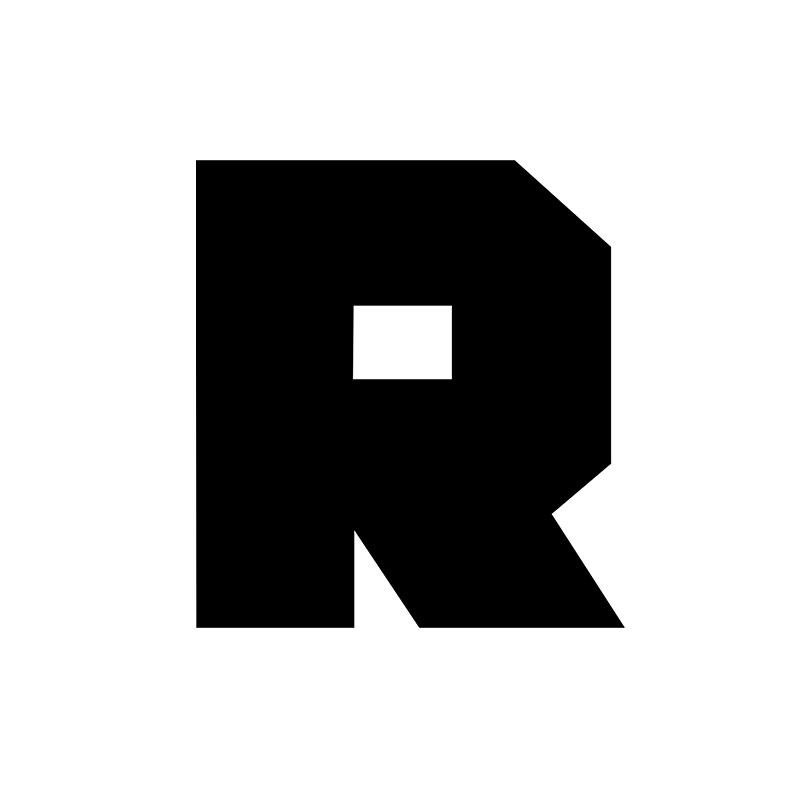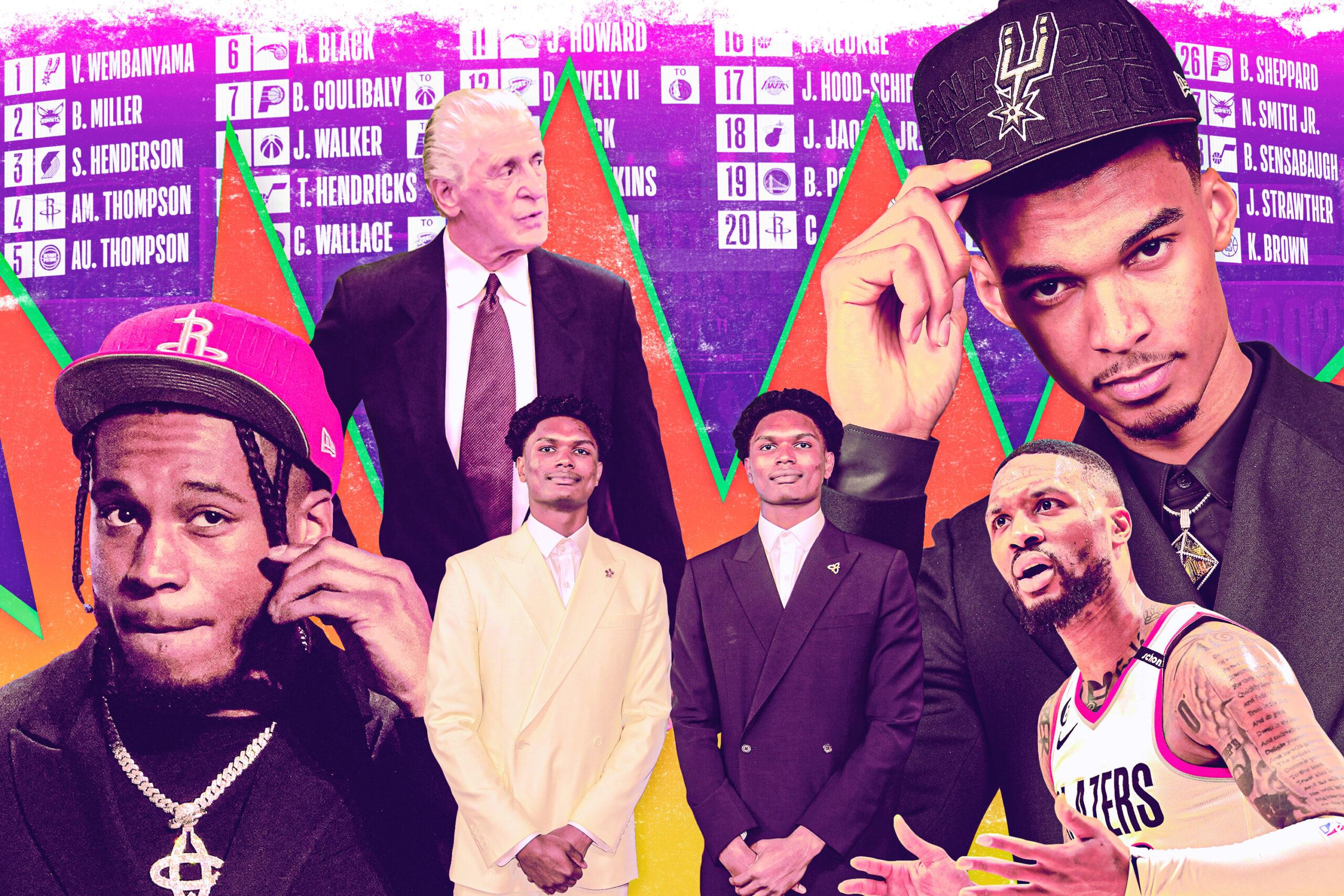
Everyone knew who was going in the no. 1 slot (spoiler: pretty good pick), but the 2023 NBA draft did deliver a handful of surprises. In Victor Wembanyama’s wake came some savvy selections and some perplexing decisions. In honor of the festivities, The Ringer’s NBA staff examines the most interesting moves that did and didn’t happen on Thursday.
Winner: The Washington Wizards, Picking a Lane
As a matter of principle, my opinions will henceforth only be swayed by those who are free in the universe. I think new Washington Wizards president Michael Winger is on that same wavelength, trusting in the prophet Victor. By our shared logic, their shocking decision to trade up to the no. 7 pick to draft Wemby’s now-former teammate Bilal Coulibaly was still a plus-value decision.
Coulibaly could be anything. At 18 years old, with that baby face, I’m not convinced he isn’t still wet from the womb. He has the absurd length that has allowed OG Anunoby to be an omnipositional defender in the league; he has the blazing end-to-end burst of Dante Exum (I swear, I mean this in a good way); he shined the brightest in pivotal postseason games for Metropolitans 92, showcasing his improving jumper and nascent abilities off the dribble. If it all comes together, and he adds strength to his considerable frame, Coulibaly could be incredible. It’s the Giannis Antetokounmpo play. It’s also the Bruno Caboclo gambit.
There are no guarantees in the future. But after years of purgatory on an organizational level, it’s just nice to see the Wizards finally expand their range of possibilities by razing this roster to the ground, with a surplus of second-rounders and a bunch of pick swaps in tow. Given the acquisition of Jordan Poole and the presence of gemini floor generals in Tyus Jones and Monte Morris, the team seemed destined to swing for the highest upside wing on their board. Could the same have been achieved with Cam Whitmore? Sure, but in a way, the tabula rasa of Coulibaly is the most apt introduction to Winger’s vision for the Wizards’ future. It could be anything.
Loser: Charlotte Hornets
Rodger Sherman: Nothing is less reliable than draft night fan reactions. When they hear the commissioner announce the name of the player their favorite team has just drafted, fans inevitably will cheer busts and boo future stars. But it’s definitely not good if your team has the second pick and everybody is mad about it. That’s what happened in Charlotte when the Hornets picked Alabama’s Brandon Miller.
I mean, even the mascot was pissed. That mascot once cheered for Cody Zeller. When you’ve lost Hugo, you’ve lost everybody!
It’s possible that Miller turns into a fine player for the Hornets. He’s 6-foot-9, a fluid athlete, and a natural shooter. Naming Paul George as “the GOAT” was something … but we’ll let it pass.
It does, however, seem like Charlotte’s process was flawed. First of all, GM Mitch Kupchak admitted the decision was in the hands of Michael Jordan—who not only has a famously horrible history of evaluating draft picks (the list stretches from Kwame Brown to Frank Kaminsky), but is also in the process of selling the Charlotte franchise, and has no stake in the success or failure of this pick. It also seems possible—if not probable—that the Hornets picked Miller over Scoot Henderson because Henderson is a point guard and the team already has LaMelo Ball. This isn’t football! You don’t need to worry about your depth chart with the second pick in a stacked class! You need to take the best player on the board, and most draft analysts felt that was Henderson, not Miller. The Hornets fan base seems to agree.
Winner: Golden State Warriors
Rob Mahoney: With all due respect to Brandin Podziemski, the no. 19 pick who will slot into the next generation of the Splash Family tree, the Warriors mostly came out a winner on Thursday for a bit of business they carried out before the draft even started. You may have heard about it: Chris Paul, a Golden State rival at three different stops, is now a freaking Warrior—in a role to be defined later. Will he start alongside Steph Curry? Or would CP, after all his playoff battles against Steph, deign to be his backup? There’s a lot to be determined in terms of how it all fits, but Golden State made an all-time upgrade in basketball IQ by acquiring Paul, a certified playmaking genius, and jettisoning Jordan Poole in the process.
It cannot be stressed enough that this trade is as much about bringing in a player of Paul’s ability as it is getting out of the Poole business. That may not be entirely fair, given the fact that the most disruptive episode involving Poole to date was him getting punched in the face by Draymond Green. By Steve Kerr’s own admission, the Warriors never really recovered from that moment. So long as Green and Poole were both on the roster, maybe the team never would. If those relationships had been mended and the Warriors had bounced back, culturally, maybe Poole would still be a Warrior. Or if Poole had played like anything other than a total mess last season, maybe he would have stuck around anyway—weird vibes be damned.
It was the combination of those two things that sealed his fate, and the fact that for the privilege of keeping Poole around, Golden State would have paid $128 million in salary alone over the next four years—to say nothing of the mounting luxury tax penalties and the opportunity costs of steering a superyacht of a roster in the world of a new CBA. It’s better for Golden State to be done with it. Cutting bait on Poole is yet another indictment of the Warriors’ two timelines philosophy, but better to admit that than stay the course with a young player whose evident talents couldn’t measure up to his baffling decisions on the court and the somewhat toxic situation that had developed around him for reasons beyond his control. Maybe Poole can ultimately come out a winner in this deal, too. He just didn’t play like one for the Warriors anymore.
Loser: Superstar Trades
Michael Pina: Hours after Chris Paul was swapped for Jordan Poole, we got nothing! Damian Lillard is still a member of the Trail Blazers despite 6-foot-2 point guard Scoot Henderson falling to them at no. 3. Zion Williamson remains the Pelicans’ franchise player after a perilous stretch when reports pegged him as potentially being on the outs in New Orleans. Nothing out of the blue materialized involving Pascal Siakam, Karl-Anthony Towns, or Trae Young either. But the offseason is young.
Winner: Um, the Spurs
Isaac Levy-Rubinett: In my life as a Spurs fan, I’ve never cared much about the NBA draft. It’s somewhat ironic, considering my favorite team owes its decades of sustained success in large part to that system. David Robinson, Tim Duncan, and Kawhi Leonard all came to San Antonio on draft night; so did beloved stalwarts like Tony Parker and Manu Ginóbili; even the Spurs’ late-round selections have netted valuable contributors, from Kyle Anderson to Dejounte Murray. And yet, I’ve usually been more invested in a given playoff run than whatever name the league commissioner might call when the Spurs are on the clock.
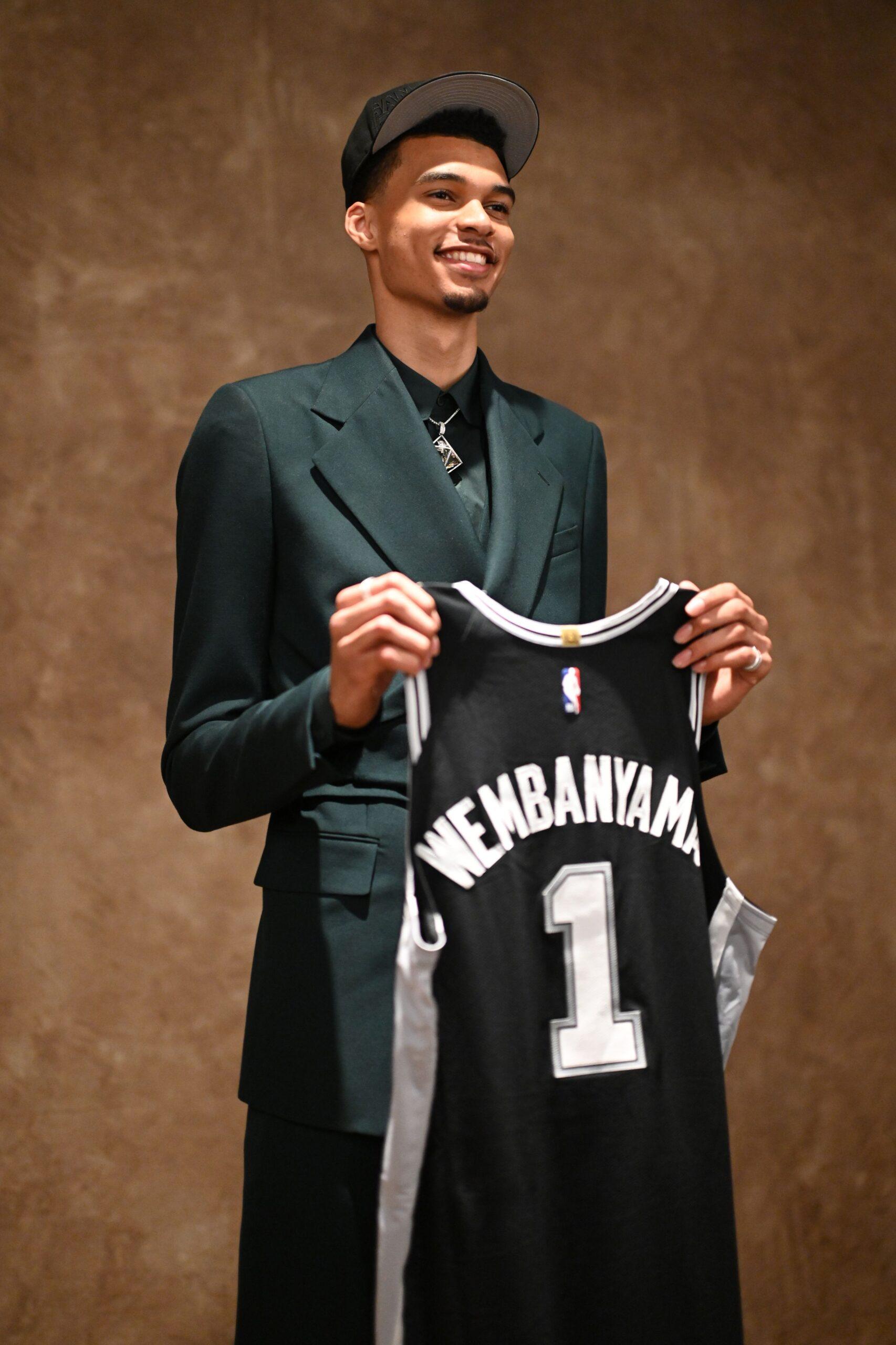
This year was different. I cared. Victor Wembanyama, the 7-foot-4 marvel from France, has the potential to become one of the greatest players of all time. He is the exact sort of foundational talent—and more—the Spurs have searched for since trading Leonard in 2018. His presence clarifies the entire team-building enterprise. That he moves like a guard, possesses preternatural shot-blocking instincts, and pops 3s off the dribble makes his ceiling as a prospect preposterously high. In fact, there is no ceiling. Just the sky, with clouds shaped like croissants and berets.
Wembanyama’s arrival ushers in a new era of Spurs basketball, but it also spawns a new feeling for some fans, or at least for this one. The through line from Robinson to Duncan to Wembanyama—San Antonio’s three no. 1 picks in the past 36 years, all centers—creates a sense that something cyclical has come back around. The Admiral and the Big Fundamental came and went, and now we’re on the precipice of something new. We hope one day it will turn into something familiar.
For all of the hype around Wembanyama, he will be hard-pressed to take the Spurs further than Duncan did. Duncan won two MVPs and five championships, and he anchored the winningest trio in NBA history, all with a metronomic brilliance that fans of other teams found boring but I found captivating. I became a Spurs fan during that unprecedented run of greatness; and though I’m trying to resist it, tonight feels a little bit like being plopped back at the beginning of the timeline. No one knows whether Wembanyama will become the kind of player that Duncan was or whether the Spurs will become the kind of team they once were—and I write that knowing it’s unreasonable and unfair to expect either outcome. But the mere possibility is at once nostalgic and thrilling. Tonight was unlike any other I can remember as a Spurs fan. Here’s hoping another 20-plus years pass before I experience another one like it.
Loser: Every Team That Passed on Cam Whitmore
Pina: I do not watch college basketball, have never seen Cam Whitmore play an entire game, and am clueless about what specifically is so concerning in his medical report. What I do know is a bunch of smart people who spend their entire lives studying this stuff thought Whitmore was a high-lottery-pick type of talent.
At some point, it only made sense for a team that doesn’t need short-term production or instant development to realize the upside they could get from a teenager free-falling in the first round. Not to take anything away from the prospects selected in these slots, but the Jazz at no. 16, the Lakers at no. 17, the Heat at no. 18, and the Warriors at no. 19 may come to regret passing on Whitmore, an 18-year-old who, as our Kevin O’Connor once wrote, “explodes off the dribble like a semitruck with a Ferrari’s accelerator.”
In the end, the Rockets were fortunate to steal Whitmore at no. 20. If he pops, they’ll potentially emerge from draft night with two building blocks after taking Amen Thompson at no. 4. There’s almost too much young talent in Houston right now, which is a good problem to have.
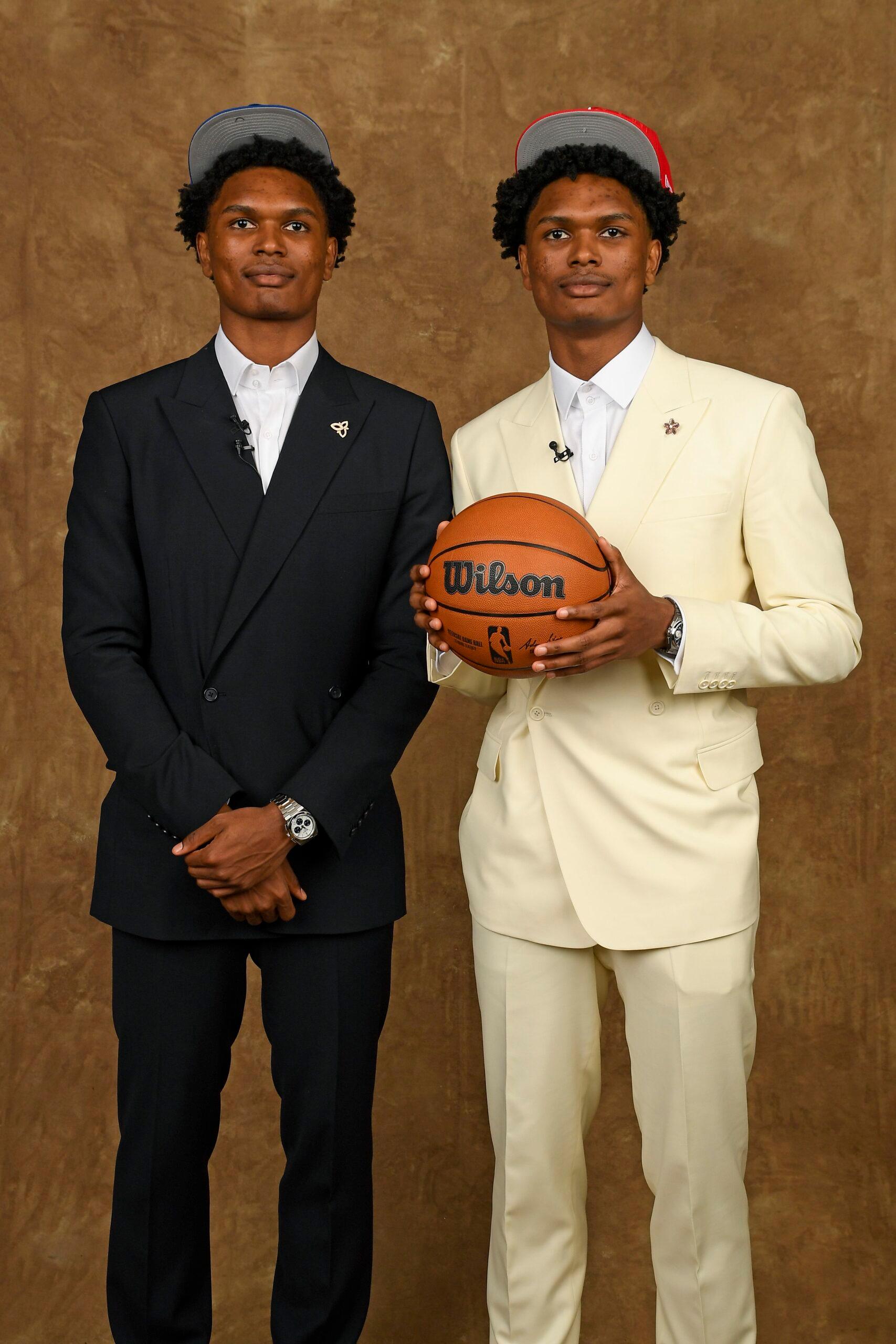
Winner: Twins
Sherman: You could say that NBA players have won the genetic lottery. Not many humans are tall, long, athletic, and coordinated enough to play in the league. But the Thompson family hit the Powerball with its 6-foot-6 identical twins. Amen was selected fourth overall by the Rockets; Ausar was drafted fifth overall by the Pistons. They’re the first brothers ever drafted in the top five of the same draft. Most analysts ranked Amen over Ausar, but The Ringer’s Kevin O’Connor had Ausar over Amen. Normally, you can identify the evil twin by looking for the one with the handlebar mustache, but neither had one, making this a tough assignment for scouts.
Later in the night, Kris Murray was selected no. 23 by the Trail Blazers, allowing him to join his identical twin, Keegan Murray, the no. 4 pick in last year’s draft. There are now six sets of identical twins in the NBA—the Thompsons, the Murrays, Marcus and Markieff Morris, Brook and Robin Lopez, Caleb and Cody Martin, and Julian and Justin Champagnie—meaning roughly 2 percent of NBA players are identical twins. (Caleb and Cody claim to be fraternal, but I simply don’t believe them. Just look at them!)
Clearly, being an identical twin is a massive advantage on the road to the NBA. If you had an older sibling, you probably lost a lot of driveway basketball games and got discouraged. If you had a younger sibling, winning was too easy, and it didn’t test your skills. But playing game after game against a literal genetic copy of yourself, working and striving to find ways to outperform someone who is the same as you in every way? That’s apparently how you build a future star.
The Jazz also drafted Taylor Hendricks no. 9, leaving his shorter fraternal twin, Tyler Hendricks, in college at UCF. I am going into the laboratory to determine exactly how this information factors into my identical twin basketball theory.
Loser: Damian Lillard
Levy-Rubinett: A wise man once said the offseason is young, which means there is still plenty of time for Portland to wheel and deal. That said, tonight went poorly for Lillard. After much speculation about whether they would trade the no. 3 pick for immediate help, the Blazers selected Scoot Henderson, a dynamic point guard who many experts believe could be a superstar.
From Lillard’s perspective, the glass-half-empty interpretation is that the only franchise he’s ever known just drafted his eventual replacement. The most charitable explanation is that the Blazers think Lillard and Henderson can coexist. That may be right! But even so, it must be a bitter pill to swallow for a 32-year-old who has only so many great seasons left.
Portland seems bullish on its ability to thread the needle and develop its next wave while competing for championships during the rest of Dame’s prime—is Bob Myers available?—but I’m skeptical. I suppose there’s some chance Portland could continue shopping Henderson for a win-now upgrade, but there’s little precedent for that type of deal, and if the Blazers’ brass couldn’t find a suitable trade before the draft, it’s unlikely they’ll find one now. A lot will happen before the start of the 2023-24 season, so this entire blurb is subject to change—but tonight it’s hard to shake the feeling that, one way or another, the clock is ticking ever louder on Dame Time in Portland.
Winner: Dallas Mavericks
Zach Kram: The Mavericks completed a terrific Texas two-step on Thursday. They first figured out a way to shed Davis Bertans’s contract just by dropping from the no. 10 pick to no. 12—but still landed the prospect they’d reportedly been targeting all along, Duke big man Dereck Lively II, at that lower slot. Then, they used the trade exception they’d opened with the Bertans deal in a trade with Sacramento to add Richaun Holmes and Olivier-Maxence Prosper, the no. 24 pick.
The Mavericks still have work to do to round out their roster: How much do they pay Kyrie Irving if they re-sign the mercurial free agent? And how do they turn some of their big man glut—which now includes Holmes and Lively—into a better wing rotation after losing all of their decent wing defenders last season? But their moves on Thursday opened up a lot more flexibility; it was a shame that they tanked at the end of the season to keep their first-round pick, but they made the best of the proceeds.
Winner: Oklahoma City Thunder
Tyler Parker: The Thunder traded the no. 12 pick and took on Davis Bertans’s decidedly bloated contract to move up two picks and take Cason Wallace. The 19-year-old dynamo out of Kentucky plays like his opponent said something he cannot forgive, like he has a moral obligation to not just compete, but to exhibit electric dominion.
He gives Oklahoma City explosiveness and versatility on defense, playmaking and spacing on offense. This is a guy who is deliriously engaged, who has said before he modeled his game after Thunder ace Shai Gilgeous-Alexander. He will fit nicely alongside SGA, Josh Giddey, Jalen Williams, and Lu Dort, the Thunder’s stable of perimeter monsters fully loaded with ballhandling, malleability, and general badassery. Heliocentric offense is good for big numbers but bad for extended playoff runs. You need to throw several different kinds of smoke. Oklahoma City has added another rhapsodic competitor to its backcourt, someone who can do damage with the ball or without. Thunderbolts and lightning. Very, very frightening. Wallace will feast. Also, next year, guess who’s back? Chetty’s back. Tell a friend.
Loser: Heat Power Players
Seerat Sohi: Move over, Pat Riley. Devin Booker is officially the best star pitchman in the league these days. Bradley Beal, who weaponized his no-trade clause to pick his future destination, chose Phoenix over Miami and landed with the Suns for the price of Chris Paul’s contract (later flipped for Jordan Poole and picks), Landry Shamet, and a handful of second-rounders and pick swaps.
Soon after, it was reported that Miami had set its sights on Damian Lillard, who it believed may finally be ready to expunge himself from Portland’s hamster wheel of perpetual mediocrity. But as the draft neared, the tea leaves suggested Lillard was going to once again redouble on his loyalty to Rip City, to The Grind™, to dinner with Jay-Z over $500K—not that he, personally, would ever have to choose.
Even with the Blazers opting to keep the no. 3 pick and draft Scoot Henderson, who plays the same position as Dame, the future Hall of Famer has yet to be traded. That could change, but right now it looks like the Heat have struck out twice going star-hunting this summer.
So what’s next for Miami? Do the Heat keep spamming Joe Cronin’s inbox? Or re-sign Gabe Vincent and Max Strus, rising over the upcoming second apron tax, and hoping an injection of Tyler Herro, who missed all but two quarters of Miami’s postseason run, is enough to push them over the hump? That could prove to be enough, and such a scenario would be a win for continuity, but draft night is an L for the Miami Heat, who we were hoping would make a bigger splash tonight.
Winner: Heat Culture
Matt Dollinger: The Heat didn’t make a splash, but they did make me laugh. The buzz that Miami might pick UCLA’s hard-nosed forward Jaime Jaquez Jr. at no. 18 (KOC, ESPN, and several other acronyms had him projected there) seemed so cliché that the other 29 front offices probably assumed it was a smoke screen. Yet for once on draft night, an NBA team took exactly who everyone thought they would. Just watch this video. These are basically Jimmy Butler highlights. Jaquez hasn’t even booked a flight to summer league, yet every other fan base already hates him. He’s perfect.
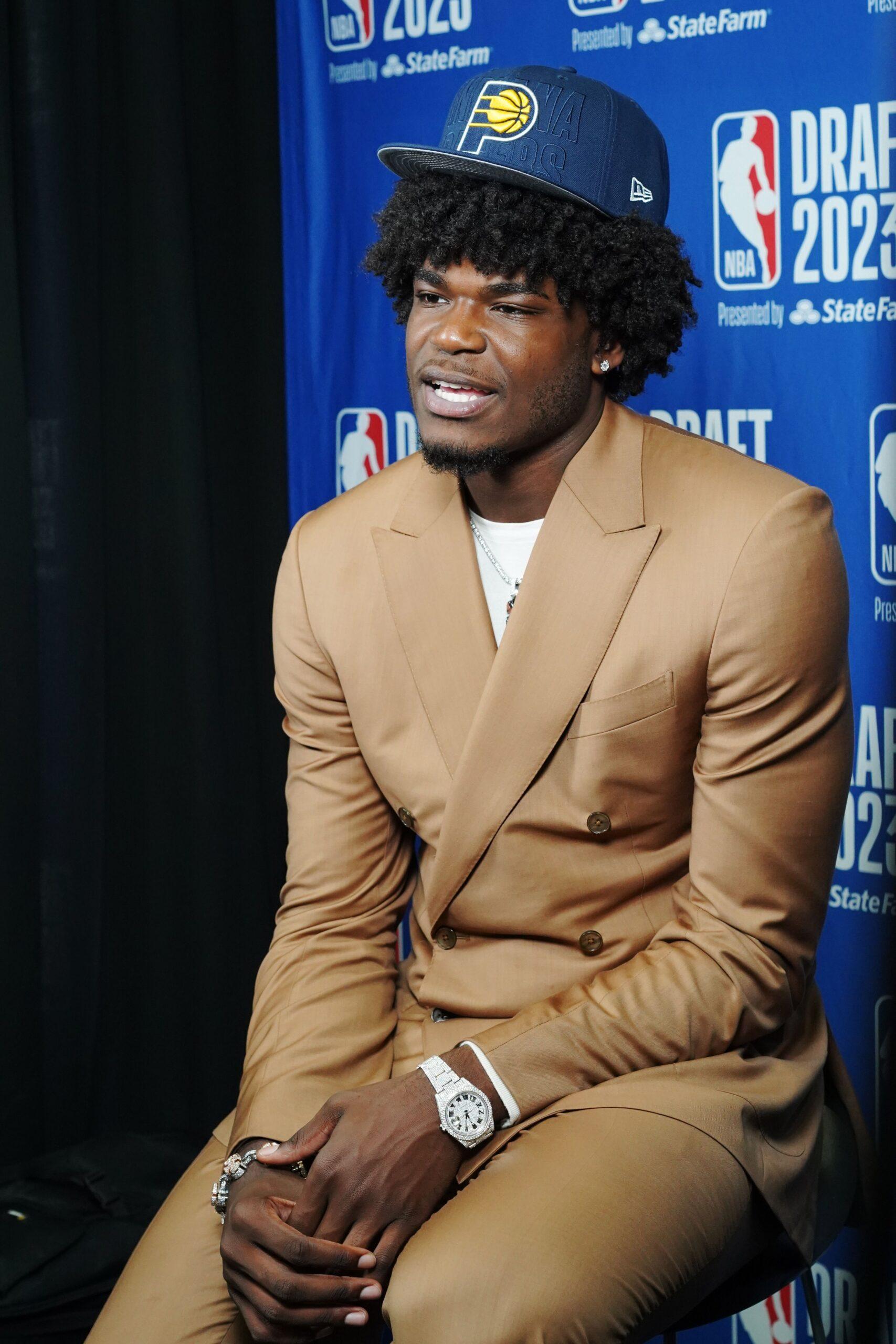
Winner: Indiana Pacers
Pina: Coming into draft night, the Pacers were desperate for a large power forward who could run the floor, obliterate Tyrese Haliburton’s lobs, clean the glass, protect the rim, switch onto guards, and do a whole bunch of other useful stuff without necessarily ever being a focal point in Rick Carlisle’s guard-heavy offense.
Houston freshman Jarace Walker checks all those boxes and more. He was long pegged in mock drafts to fall into Indiana’s lap at no. 7. Taking him there would’ve been great by itself, but the Pacers were also able to grab a pair of 2028 second-round picks from the Wizards just to go back one spot. (It’s marginal, but the eighth pick is also a little cheaper than the seventh pick—about $1.5 million over three years. Not huge, but also not nothing.)
On Wednesday, I asked Walker which NBA player’s game he most wants to emulate. “I would say I watched a lot of Jaylen Brown. A lot of Jayson Tatum, KD, Jrue Holiday,” he said. “Just a lot of two-way, versatile players who can do multiple things on the floor.” That’s music to Indiana’s ears.

